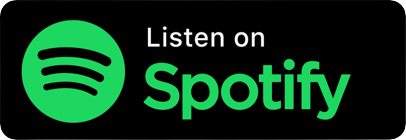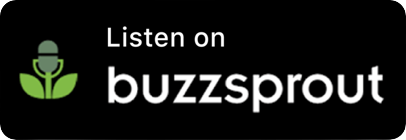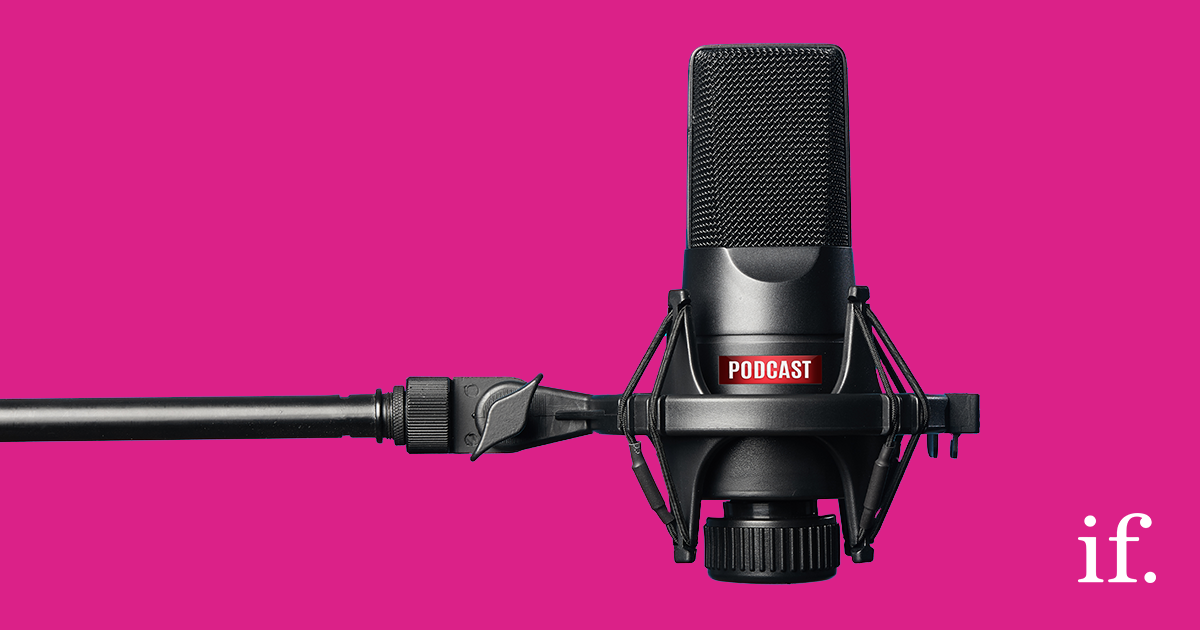Ep 38: Serious Social – Planning for the unpredictable, uncertain & unsettled
How not to bumble or botch social in 2021
The only thing we can predict about social in 2021, is that it will be unpredictable. So how do you plan for uncertainty? Why should you plan? Can you plan? What does a plan look like? Join Katy Howell in this episode of Serious Social are she explores how to structure your plans and smash social in 2021.
If you’re after more know-how to break the social boring, subscribe now.
Full Transcript
Welcome to the Serious Social podcast, created by the straight-talking social media experts at immediate future.
Welcome to serious social Live!
Let’s talk about planning for the unpredictable, uncertain & unsettled – in other words planning for next year!
You’d think, after this year, we’d be good shape for another bumpy year. We’ve pivoted, dropped campaigns, created new ones and problem solved for the last 9 months. We’ve been agile and it has, in the main worked.
The problem is agile marketing in itself, without direction, is exhausting. All that knee jerk responding, all that flying by the seat of your pants is painful and can be downright dangerous.
Firstly, and most importantly it’s impacting the mental health of marketers. All that uncertainty is causing us to move to limbic brain thinking. We’re in survival mode. It becomes hard to think ahead, to be rational. And whilst this reflexive danger mode, helps in the short term to survive, over longer periods it impacts our well-being and increases anxiety. None of us can bear another year of that if we can help it.
Secondly, there is an impact on marketing operations. Agility in crisis doesn’t allow for collaborative thinking. It pushes past analysis of performance and rushes through creativity. It gets the job done, but not always in the best way.
You can see it on social. Brands that have taken a tumble or a misstep in marketing. Even recently, I’ve seen a rather insensitive social media competition from a global insurance company. A frivolous post that has no place being part of a terrible moment in history.
Being agile in marketing, whilst necessary in a crisis, is not the only thing that going to see us through to success next year.
So let me explain. my son was chatting to me on a walk the other day and mentioned a twitter post that caught his attention. He rather liked the analogy suggesting that a certain political party’s approach to fixing the issues of the day, was rather like having a car that was fundamentally broken and fixing the problem in 5 minutes with duct tape. The problem is still there, and the fix doesn’t last long. But it works for now.
It made me think about the same for social marketing. We’ve fixed and fixed and plastered over every crack and fail in order to get through the year. Great, but for the most part we’ve made it. The problem is that the car no longer looks like a car. You can’t take it for a road trip and you can’t fit the kids inside. It no longer serves its purpose.
The answer of course is planning. Even in uncertainty, you need to take stock and set a path ahead. Never more so than on social, where your plans are always being derailed by something or other – from a format change and an algo update to a whole new network making it onto the scene.
So where to start. Some of what I will talk about will seem obvious, but in reality I find plans are rarely developed with this rigour, and some of what I will share, will be a bit of a new approach.
As always, start with a goal. Don’t prevaricate, decide where you want to be in a year. It doesn’t matter that things may change. Heck, you can guarantee they will change. What you need is long-term thinking. So that any fix you make along the way, keeps your car on the road and fit for purpose.
Because next year is going to need you to up the game on two fronts. The first is proving value to your business and the second is building trust with your audience.
Neither of which is a short term fix. We saw that in our benchmark report when 88% of marketers said they were unable to always prove the value of social. If you plan it in from the outset, you have a much better chance of getting to the ROI. That means planning the goals, setting KPIs and metrics and getting buy in from leadership. All before you start the year.
Trust is at an all-time low amongst our audiences. Social is often used as a quick fix. A traffic driver or a sales tool. In 2021 it is going to be just as important to build brand. Every company will need to reinforce credibility, be consistent in its purpose and build an identity that has meaning to its audience.
You’ll need to update your SWOT, do competitive and category analysis, and you should consider benchmarking your performance against peers. Of course, that’s standard.
Once you have your goals, you need to build in what has happened this year. As Talking Heads say in their lyrics for Road to Nowhere:
Well, we know where we’re goin’
But we don’t know where we’ve been
And as we don’t wish to be on a road to Nowhere, we need to look back. There will be things that what worked really well in all the chaos, and they’ll be things that failed; and we want to find where are the nuggets and opportunities and what do we need to avoid like the plague (no pun intended).
With optimised goals set in place, now’s the time to start planning in earnest. And the one thing we want our social marketing to do next year is cuddle up close to consumers – we want to build relationships, and never more so in B2B and be relevant in everything. Tolerance is low for poorly targeted content.
So how do you understand an audience that is fickle, where the virus, the governments and priorities are constantly changing.
Well not all is lost. Start with the macro trends from last year that show signs of sticking for at least the next 12 months. For instance, social use increased 40% and is likely to stay high. It means competition for attention is heavy and you need to plan how you will stand out. Conversations about online shopping increased 66% in the last seven months compared to the previous prior and there is a surge of talk about squad shopping – that’s kind of online shopping together in gangs, sort of representing the mall. We can see that ecommerce is going to be a big landgrab through 2021.
If you dig a bit deeper you’ll discover that over 60% of negative posts are because peoples tolerance for poor service, poor products or poor delivery is at an all-time low. As is the growing resistance to handing over data – whether you’re in B2B or Consumer – customers are using burner email accounts and clicking away from form fills.
Then there are the social signals demonstrating cultural shifts that we can take into next year. This has been a year of acceleration in changing values and attitudes. BLM brought diversity to the fore. And it has changed perspectives. 26% of consumers want businesses to continue to support BLM – it’s even higher in the US.
Take a look at search demand on Google trends and you’ll see an almost exponential rise in searches for ethical and sustainable brand. 57% of consumers want businesses to focus on sustainability and the environment net year. Data from Brandwatch Qriously reveals over 50% of consumers say it is important that businesses to proactively make the world a better place. Over 45% want brands to set an example. There is pressure to be more.
These insights – cultural signals and the megatrends, coupled with your goals form the stable foundations of your plan. Add in the building blocks of messaging and you have all the fundamentals in place.
The rest of your planning is going to be about the scenarios. This is where planning changes from the past. You’ll be planning for two or even three different outcomes.
Start first with priorities. Line up your products or services and assign scenarios for when they will be a high priority focus. Do the same with your media mix, for the channels that you’ll use. For instance, in January it’s pretty likely that consumer numbers commuting will still remain low. Your focus might therefore be on the more digital channels. Somewhere after spring, there is likely a move back into offices and the commute is back on. You may want to open up outdoor, DM etc. And of course, you will need to plan to flex your social from topics and themes to copy tone and visuals, depending on each scenario.
Priorities and scenario planning whilst keeping an eagle eye on your goals means even if things change, you and your team know what to do.
With these all mapped. You need to understand when and how each will be flipped on, when you will trash them and how you might morph. This is where you plan moves to a more operational structure because rhythm is going to matter next year.
Plan who you need on your core team. who will be bussed in and when, and who might be benched and why.
Outside of resources and collaboration you need to create this new operating rhythm.
You will need to measure more often, delve into audience insights regularly, and realign your plan every few weeks or even months.
To do this you want to be clear on the data you will collect. What metrics and what audience analysis will help you make a decisions fast. Set meeting agendas now, so when you get to decision making it can be swift. Know what priorities will come into play when and how you will realign channels fast.
So you have the solid foundations, you understand what and how things might change things operationally. The last bit is your opportunity to fly on social.
And to fly, you’re going to have to take a leap. A leap into experimentation, innovation and being brave.
With so much noise on social next year, you are going to have to stand out to have any impact whatsoever. That means being brave and holding some resources and investment back for tests and trials. It could be a campaign to grab a new audience, or using a new format, or just simply tilting your creativie hard to engage with the changing audience emotions.
Now and only now with goals, scenarios and innovation in place can you ask for the budget you need. Not squeeze it all for the budget your given, but actually make a business case for the money that will ensure you can succeed.
I have whizzed through a lot this Friday. I’ve certainly not touched on the whole of planning, or we’d have been here for several hours. I’ve tried to give you the elements I think are going to change; and if we get ahead of them it will make life so much easier if we are able to do so with some level of certainty in a taskforce that can come together really quickly.
We have covered scenario plans, covered the basics, covered the innovation, covered the need to test.
Marketers need a plan that is built for an uncertain and unpredictable year. Need more help with this, you know where to find us and we’ll be back next week with another Serious Social from CJ.
If you’re after more know-how to break the social boring, subscribe now and check out the show notes for links to our website and social profiles.




